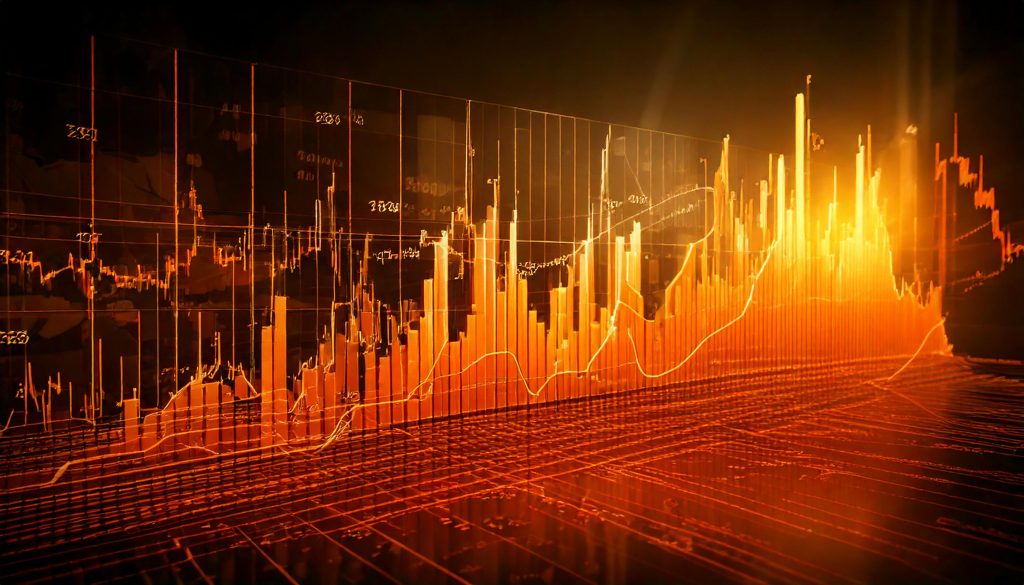Algorithmic Trading and Artificial Intelligence: A Revolution in the Financial Markets
The financial markets, a complex ecosystem of interconnected networks and ever-shifting variables, have always been a breeding ground for innovation. As technology continues its relentless advance, the realm of finance is undergoing a profound transformation, driven by the convergence of algorithmic trading and artificial intelligence (AI). This powerful synergy is not just optimizing trading processes but redefining the very nature of investment strategies, risk management, and market participation.
Understanding Algorithmic Trading
Algorithmic trading, also known as algo trading, involves using computer programs to automate the trading process. These programs are designed to execute trades based on predefined sets of rules and instructions, eliminating the need for human intervention. By automating the trading process, algorithmic trading offers several advantages, including:
- Speed and Efficiency: Algorithms can analyze vast amounts of data and execute trades at speeds far exceeding human capabilities. This allows traders to capitalize on fleeting market opportunities and react swiftly to changing market conditions.
- Reduced Emotional Bias: Emotions often influence human trading decisions, leading to impulsive actions and costly mistakes. Algorithmic trading removes emotional bias from the equation, ensuring that trades are executed based on objective criteria and predefined rules.
- Increased Accuracy: Algorithms can execute trades with high precision, minimizing errors and ensuring consistent performance. This helps traders avoid costly mistakes and improve overall trading accuracy.
- 24/7 Availability: Algorithms can operate around the clock, monitoring markets and executing trades even when human traders are unavailable. This allows traders to capitalize on opportunities in different time zones and markets.
The Role of Artificial Intelligence
Artificial intelligence (AI) plays a crucial role in enhancing the capabilities of algorithmic trading systems. AI algorithms can analyze vast amounts of data, identify patterns, and make predictions with increasing accuracy. By incorporating AI into algorithmic trading systems, traders can:
- Improve Predictive Accuracy: AI algorithms can analyze historical market data, identify trends, and predict future price movements with increasing accuracy. This allows traders to make more informed decisions and potentially improve their trading performance.
- Adapt to Changing Market Conditions: AI algorithms can learn and adapt to changing market conditions, adjusting trading strategies as needed. This helps traders stay ahead of the curve and navigate dynamic market environments.
- Identify Complex Patterns: AI algorithms can identify complex patterns and relationships in market data that may not be apparent to human traders. This allows traders to uncover hidden opportunities and gain a deeper understanding of market dynamics.
- Optimize Trading Strategies: AI algorithms can optimize trading strategies by analyzing historical data and identifying the most effective parameters and settings. This helps traders fine-tune their strategies and improve their overall performance.
Types of Algorithmic Trading Strategies
Algorithmic trading encompasses a wide range of trading strategies, each designed to achieve specific goals and capitalize on different market conditions. Some common types of algorithmic trading strategies include:
- Trend-Following Strategies: These strategies aim to identify and capitalize on market trends, buying assets when prices are rising and selling them when prices are falling.
- Arbitrage Strategies: These strategies exploit price discrepancies between different markets or exchanges, buying an asset in one market and simultaneously selling it in another market at a higher price.
- Mean Reversion Strategies: These strategies capitalize on the tendency of asset prices to revert to their average or mean value, buying assets when they are undervalued and selling them when they are overvalued.
- Market Making Strategies: These strategies involve providing liquidity to the market by placing both buy and sell orders, profiting from the spread between the bid and ask prices.
Implementing Algorithmic Trading Systems
Implementing algorithmic trading systems requires careful planning and execution. Here are some key steps involved in the process:
- Define Your Trading Goals and Objectives: Clearly define your trading goals, risk tolerance, and preferred markets. This will help you choose the right algorithmic trading strategy and parameters.
- Choose a Trading Platform and Programming Language: Select a trading platform that supports algorithmic trading and a programming language that you are comfortable with. Popular choices include Python, C++, and Java.
- Develop and Backtest Your Algorithm: Develop your algorithmic trading strategy and backtest it using historical data to evaluate its effectiveness and identify potential weaknesses.
- Optimize and Refine Your Algorithm: Fine-tune your algorithm based on the backtesting results, adjusting parameters and settings to improve its performance.
- Deploy and Monitor Your Algorithm: Deploy your algorithm on a live trading account and monitor its performance closely. Make adjustments as needed to adapt to changing market conditions.
Challenges and Considerations
While algorithmic trading offers numerous advantages, it also presents certain challenges and considerations:
- Technical Complexity: Developing and implementing algorithmic trading systems requires technical expertise and programming skills.
- Market Volatility and Risk: Algorithmic trading systems can be vulnerable to market volatility and unexpected events, potentially leading to significant losses.
- Over-Optimization and Curve Fitting: Over-optimizing an algorithm to fit historical data can lead to poor performance in live trading.
- Regulatory Compliance: Algorithmic trading systems must comply with relevant regulations and guidelines to avoid legal issues.
The Future of Algorithmic Trading and AI
Algorithmic trading and AI are continuously evolving, with new technologies and techniques emerging to enhance trading capabilities. The future of algorithmic trading is likely to be shaped by advancements in areas such as:
- Machine Learning: Machine learning algorithms can analyze vast amounts of data and adapt to changing market conditions, improving the accuracy and efficiency of trading strategies.
- Deep Learning: Deep learning algorithms can identify complex patterns and relationships in market data, uncovering hidden opportunities and enhancing trading strategies.
- Natural Language Processing (NLP): NLP can analyze news articles, social media posts, and other textual data to gauge market sentiment and inform trading decisions.
- Cloud Computing: Cloud computing provides scalable and cost-effective infrastructure for running complex algorithmic trading systems.
Conclusion
Algorithmic trading, powered by AI, has transformed the financial markets, offering traders new tools and capabilities to gain an edge and make informed decisions. By automating the trading process and leveraging the power of AI, traders can improve efficiency, reduce emotional bias, and potentially enhance their trading performance. However, it’s crucial to approach algorithmic trading with careful planning, risk management, and a commitment to continuous learning and adaptation. As technology continues to advance, algorithmic trading and AI are poised to play an even greater role in shaping the future of financial markets.






The use of offensive and immoral words and content in any form and by any person is prohibited.
Publishing any non-economic views, promoting the site, promoting social network pages, including contact information and unrelated links is not allowed.
Comments that violate the above rules will not be approved.